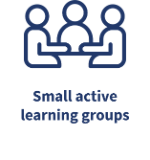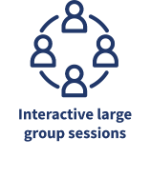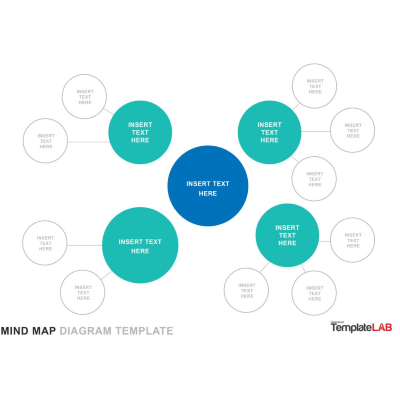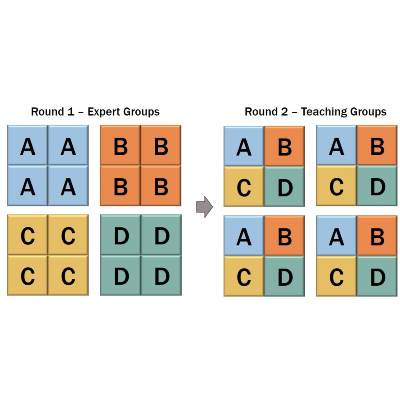Active Learning

 Introduction: What is Active Learning?
Introduction: What is Active Learning?
Active learning can be defined as any strategy “that involves students in doing things and thinking about the things they are doing” (Bonwell & Eison, 1991, p.5). It includes any type of instructional activity where students are not simply learning passively (listening, reading, and memorising), but are engaged in activities involving higher order thinking skills, such as analysing, applying, synthesising, evaluating, or creating. Active learning can take various forms, such as: collaborative tasks: working pairs or groups to discuss a challenging question or solve a problem; active cognitive tasks (Jacobs, 2023): creating concept maps or reflecting on learning; or interactive tasks: taking part in an online quiz or social annotation.
“Learning is not a spectator sport. Students do not learn much just by sitting in classes listening to teachers, memorizing pre-packaged assignments, and spitting out answers. They must talk about what they are learning, write about it, relate it to past experiences and apply it to their daily lives. They must make what they learn part of themselves.”— Chickering & Gamson, 1987, p.4
By taking an active part in their learning, students gain a greater depth of knowledge and ultimately achieve better outcomes. Students not only learn from the lecturer, but also from each other, helping them to co-construct their knowledge and ‘shape and reshape their thoughts and perspectives’ (Marrone et al, p.14).
The pedagogy underpinning active learning is drawn from theories of constructivism and socio-constructivism. Constructivist theory states that knowledge is not transmitted but constructed: meaning is constructed as learners create multiple links between the new information they have acquired and knowledge they already have. Socio-constructivist theory takes this concept further, stating that individuals are likely to learn more when they learn with others and are actively involved in discussing, explaining, and collaborating.
“Students learn a great deal by explaining their ideas to others and by participating in activities in which they can learn from their peers.”— Boud, 2014, p.3
Active Learning at Queen Mary
Active learning is fully aligned with the Queen Mary Inclusive Curriculum Framework, our Strategy 2030, particularly with two of the four pillars of excellence:
Excellence in Education
- Our programmes are always devised with the student at the centre, and are coherent, easy to navigate and support overall progression.
Excellence in Student Engagement
- We continually seek feedback from and work with our students to ensure that the curriculum, pedagogic approaches, assessment and feedback, and academic advising processes support the learner journey.
- Students are empowered to engage in peer-to-peer learning, assessment and teamwork, creating greater engagement.
Active Learning is also a fundamental aspect of the Queen Mary Educational Approach: the Active Curriculum for Excellence (ACE). This approach is based on the four pillars of excellence and five integrated components:
- Student-paced learning activities
- Interactive large group sessions*
- Learning by doing sessions*
- Small active learning groups*
- Co-created activities*
* Component directly relates to active learning.
Benefits for Learners and Educators 
- Active learning improves learner outcomes
There is plenty of evidence in support of active learning improving test performance in STEMM (Aji and Khan, 2019; Freeman et al, 2014; Delauriers et al, 2010; Schmidt et al, 2009; Knight and Wood, 2005). There is also evidence of improved outcomes for learners in Humanities (McCarthy and Anderson, 2000).
- Active learning reduces attainment/awarding gap
In STEMM contexts, active learning has been shown to reduce the attainment gap for underrepresented learners (Theobald et al, 2010; Haak, 2011; Lorenzo et al, 2006), and the gap between domestic and international learner attainment in Humanities subjects (Kerridge and Simpson, 2019).
- Active learning increase learner engagement and has a positive impact on attendance.
Büchele (2020), Delauriers et al (2010), and McCarthy and Anderson (2000) have all observed noticeable increases in engagement with, and attendance of, classes deploying active learning.
- Active learning techniques are positively received by learners.
In studies by Lumpkin (2015) and Delauriers et al (2010), learners reported that interactive learning approaches positively impacted their learning, and research from Winstone and Millward (2012) and Vernon and Blake (1993) showed that learners responded very positively to classes incorporating problem-based learning.
- Active learning provides educators and learners with instant feedback on what learning is taking place and what still needs to be learned.
As learners are responding to and applying what they are learning during the teaching session, educators can see immediately which concepts have been understood and which ones need further clarification and can use this feedback to inform subsequent sessions. Learners can also check their own understanding and track their progress, which can improve motivation.
“Instructors who create a classroom in which inquiry, respectful debate, and risk-taking are encouraged–and in which being “wrong” is recognized as an important opportunity for learning– are modelling the best practices of interactive engagement for their students.”— Hodges, 2020, p.9
Active Learning Techniques
“The most inclusive university of its kind, anywhere.” - Queen Mary Strategy 2030
Our learners are heterogenous: their minds work differently, they have different prior knowledge, different skills and abilities, come from different language and cultural backgrounds, and consequently, not all learners may be able to participate actively when they first start university. Learners may lack confidence in speaking in front of others: those learners whose first language isn’t English, those who are neurodiverse, those who are the first in their family to go to university, and those who are introverted more anxious. Many modules are interdisciplinary, which may mean that learners have varying levels of prior knowledge and skills.
The techniques outlined below include lower-stakes activities as well as more demanding tasks. Beginning with the shorter, less demanding tasks allows learners to gain confidence with this method of teaching and learning, and gain the confidence needed to participate actively in class. As active learning is an inclusive and equitable approach, it is a core aspect of Queen Mary’s Strategy 2030, and our Education Approach, the Active Curriculum for Excellence. The techniques are colour-coded to suit various teaching contexts.
1. Think-Pair-Share
Ask students a challenging question, requiring higher order thinking skills. Individuals think about their answer for one minute, then discuss their answer with their neighbour for two minutes. Select pairs at random to share their thoughts with the whole group (for large classes they could first share with another pair, and then the whole group). Think-Pair-Share incorporates both the benefits of wait time and collaborative learning (see McTighe and Lyman, 1988).
2. Interactive Lecture
Break up a lecture with an interactive task which lets all students work directly with the material. Students might observe and interpret features of images, interpret graphs, make calculations, predictions, or estimates, etc. After hearing the correct answer/interpretation (if there is one), students can discuss in pairs how their answer was similar/different to the actual one.
3. Pause procedure
Pause a lecture for two minutes every 12 to 18 minutes so that students can discuss their notes in pairs. This encourages students to reflect on their understanding of the material and provides an opportunity for questioning and clarification, which can significantly improve learning (Bonwell & Eison, 1991).
4. Retrieval practice
Pause for two or three minutes every 12-15 and ask students to write everything they can remember from preceding class segment, encouraging questions whenever necessary. Retrieving information from memory has been proven to have significant benefits for learning (Roediger, 2012; Dunlowsky et al. 2013). Online classes could do this using Padlet.
5. Quizzes and polls
Using Audience Response Systems (ARS) in your sessions is proven to have significant benefits for both student engagement and student learning (Knight and Wood, 2005, Blasco-Arcas et al., 2013). They enable students to respond anonymously, so encourage participation in a low-stakes, low-anxiety way. There are a number of online tools which can be used: one of the best ones is Mentimeter. Mentimeter has a wide range of functions, enabling you to recreate revision quizzes, take a quick opinion poll, allow students to make predications, etc. There is an extensive range of question types: for example, multiple choice, true/false, Likert scale, open-ended, single word responses, etc.
6. Minute paper
Ask students a question that requires them to reflect on their learning or to engage in critical thinking. Typically, a minute paper asks two questions: “What was the most important thing you learned today?” and “What question is unanswered?” Ask them to write for one minute. Students then share their responses to stimulate discussion, or the responses can be collected at the end of the session so anything which is unclear can be reviewed in future sessions. This approach encourages students to articulate their learning and examine newly formed connections. For online classes, this activity could be done using Padlet.
7. The Muddiest Point
Ask students to write down a quick response to one question: “What was the muddiest point in the session?” (Muddiest meaning ‘most unclear’ or 'most confusing') This can be done either on slips of paper which are collected in at the end of the session, or via a Mentimeter poll. This encourages students to communicate when something is unclear, and the responses can be used to inform future sessions.
8. Categorising/sorting information
Present students with a list of different problems or concepts and ask them to sort the terms into categories to highlight how they organize their knowledge. Ask students to share their categories in pairs or small groups and note similarities and differences. This approach allows students to articulate and question the distinctions they see within a field of related items and can help you to identify any misconceptions. Alternatively, give students a blank grid with two or three topics which share some characteristics, or which can be easily confused, and a separate list of characteristics of each one. Students work in pairs or small groups to add the characteristics to the correct topic.
9. Concept Maps and Advance Organisers
Ask students to create a concept map of key concepts and the relationships between them. Creating visual representations of their mental maps helps you and your students understand how they organise their knowledge and understand how concepts are related. Students can compare concept maps with each other to question and consolidate their own understanding.
As well as concept maps, other types of advance/graphic organisers can be used to help students organise their ideas, compare and contrast ideas and clarify relationships between ideas. Completing Venn diagrams, grids, or flow charts are all useful activities which students can complete either individually or in pairs, and then compare their ideas with others.
10. Information gaps
Students work in pairs. One student has half the information, the other student has the other half. The information could be a text with gaps, or key concepts and definitions to match, or a formula to solve. Students work together to build the completed version. This allows students to teach each other and promotes higher order thinking skills.
11. Student-generated test questions

Give each student a copy of the intended learning outcomes for the session and a copy of Bloom’s Taxonomy with several verbs aligning with each level of learning. Ask students to create test questions which address the learning outcomes, and which correspond with each level of learning. These questions can be answered in pairs or small groups or collected to use in quizzes.
12. Sequence reconstruction/Strip sequence
This activity works well for any process which has a clear sequence of steps. In pairs or groups, students are given the steps in a process on jumbled strips of paper. They work together to reconstruct the correct sequence. This allows students to build their logical thinking processes and check their understanding of a process.
13. Jigsaw Reading
Students work in groups of three or four. Each student in the team is given a text (or a section of a longer text) to read and become an expert on that topic. After each person has become an expert on their text, they explain what they have read to the others in their group. In this way, everyone knows something important about each (section of the) text. This technique enables each student to teach others, which ensures equity (see Aronson, 1978), facilitates deep learning, and allows students to collaborate and share their workload.
(Image from Derek Bruff, https://derekbruff.org/?p=3401)
14. Social annotation
Students use social annotation software such as Talis Elevate, Perusall or Hypothesis to take collaborative notes on a selected text. Students can read, comment on, and ask questions on each other’s annotations, allowing them to see others’ perspectives on the text and to share ideas.
15. What/how/why (content/form/function)
Students work in small groups to analyse a particular item, for example a poem, a story, a design, an object, an image, a graph, etc. They have to identify the content (what), the form (how) and the function (why), allowing them to think about different ways in which meaning is communicated.
16. Decision-making activities
Working in small groups, give students some authentic, real-world situations that require them to apply their collective knowledge to solve a problem or come to a decision. This activity shows students how they can apply their learning in the real world when they graduate.
17. Stand where you stand
Give students a number of statements (e.g. controversial opinions, or misconceptions) which they need to respond to. Around the room, the opinions strongly agree, agree, neither agree nor disagree, disagree, strongly disagree are displayed. Students stand up and ‘stand where they stand’, i.e., stand beside the opinion they most identify with. Students can then discuss their thinking with each other and can change positions if they change their mind. A lower stakes version of this task could be made using Mentimeter.
18. Role Play
Working in groups, each student is assigned a role in a real-world scenario with several stakeholders and perspectives. The scenario should have a decision to make or a problem to solve. Allow time after the role play to discuss the decisions made. This task allows students to see different perspectives and stakeholders in a scenario and provides a scaffold for discussion of complex topics.
19. Forum Theatre
Forum theatre is a technique where the audience has an opportunity to stop the action and suggest what should happen next. As actors and audience are equal participants, it is a powerful collaborative technique, first used by Augusto Boal as part of the Theatre of the Oppressed (see Campbell and Campbell, 2019). It is particularly useful for generating and developing a variety of ideas and exploring possible outcomes from ‘what if…?’ scenarios.
Getting Started with Active Learning
Active learning may be new for some learners, so here are a few tips to ensure that your activities are successful.
- Create a friendly, open environment and ensure learners know that making mistakes is a normal part of the learning process.
- Choose low-stakes, shorter tasks to begin with, e.g., Think-Pair-Share, Minute Papers, or Pause Procedure.
- Think about your intended learning outcomes for the session and choose a task that aligns with those.
- Tell your learners why they are doing the task and the benefits of it.
- Give clear instructions – written as well as spoken.
- Manage the timing – use a timer to stick to the time limit.
- Use Mentimeter to create quick quizzes and polls and give learners - and you - instant feedback on their learning.
- Talk to learners about their learning to help them think about their own learning skills and strategies.
"Active learning doesn’t just happen; it occurs in the classroom when the teacher creates a learning environment that makes it more likely to occur.”— Michael, 2006, p.164
References
Aji, C.A. and Khan, M.J., 2019. The impact of active learning on students’ academic performance. Open Journal of Social Sciences, 7(03).
Aronson, E., 1978. The jigsaw classroom. Sage.
Blasco-Arcas, L., Buil, I., Hernández-Ortega, B. and Sese, F.J., 2013. Using clickers in class. The role of interactivity, active collaborative learning and engagement in learning performance. Computers & Education, 62, pp.102-110.
Bonwell, C.C. and Eison, J.A., 1991. Active learning: Creating excitement in the classroom. 1991 ASHE-ERIC higher education reports. ERIC Clearinghouse on Higher Education, The George Washington University, One Dupont Circle, Suite 630, Washington, DC 20036-1183.
Boud, D. and Cohen, R., 2014. Peer learning in higher education: Learning from and with each other. Routledge.
Büchele, S., 2021. Evaluating the link between attendance and performance in higher education: the role of classroom engagement dimensions. Assessment & Evaluation in Higher Education, 46(1), pp.132-150.
Campbell, A. and Campbell, A.M., 2019. The theatre of the oppressed in practice today: An introduction to the work and principles of Augusto Boal. Bloomsbury Publishing.
Chickering, A.W. and Gamson, Z.F., 1987. Seven principles for good practice in undergraduate education. AAHE bulletin 3, pp. 3-7.
Deslauriers, L., Schelew, E. and Wieman, C., 2011. Improved learning in a large-enrollment physics class. science, 332(6031), pp.862-864.
Dunlosky, J., Rawson, K.A., Marsh, E.J., Nathan, M.J. and Willingham, D.T., 2013. Improving students’ learning with effective learning techniques: Promising directions from cognitive and educational psychology. Psychological Science in the Public interest, 14(1), pp.4-58.
Freeman, S., Eddy, S.L., McDonough, M., Smith, M.K., Okoroafor, N., Jordt, H. and Wenderoth, M.P., 2014. Active learning increases student performance in science, engineering, and mathematics. Proceedings of the national academy of sciences, 111(23), pp.8410-8415.
Jacobs, M., 2023. Active Cognitive Tasks- Synthesising Frameworks for Active Learning Online. In: Garnham, W.A. and Gowers, I.R. eds.,. Active Learning in Higher Education: Theoretical Considerations and Perspectives. Taylor & Francis.
Haak, D.C., HilleRisLambers, J., Pitre, E. and Freeman, S., 2011. Increased structure and active learning reduce the achievement gap in introductory biology. Science, 332(6034), pp.1213-1216.
Hodges, L.C., 2020. Student engagement in active learning classes. Active learning in college science: The case for evidence-based practice, pp.27-41.
Kerridge, C. and Simpson, C., 2019. Narrowing the attainment gap between domestic and international students: use of a simulation and experiential learning in mixed-cohort strategic management teaching. In Developments in Business Simulation and Experiential Learning: Proceedings of the Annual ABSEL conference (Vol. 46).
Knight, J.K. and Wood, W.B., 2005. Teaching more by lecturing less. Cell biology education, 4(4), pp.298-310.
Lorenzo, M., Crouch, C.H., Mazur, E., 2006. Reducing the gender gap in the physics classroom. American Journal of Physics 74, 118–122.
Marrone, M., Taylor, M. and Hammerle, M., 2018. Do international students appreciate active learning in lectures? Australasian Journal of Information Systems, 22.
McTighe, J. and Lyman, F.T., 1988. Cueing thinking in the classroom: The promise of theory-embedded tools. Educational leadership, 45(7), pp.18-24.
Michael, J., 2006. Where's the evidence that active learning works? Advances in physiology education.
Prince, M., 2004. Does active learning work? A review of the research. Journal of engineering education, 93(3), pp.223-231.
Rivard, L.P. and Straw, S.B., 2000. The effect of talk and writing on learning science: An exploratory study. Science education, 84(5), pp.566-593.
Roediger III, H.L. and Pyc, M.A., 2012. Inexpensive techniques to improve education: Applying cognitive psychology to enhance educational practice. Journal of Applied Research in Memory and Cognition, 1(4), pp.242-248.
Schmidt, H.G., Cohen‐Schotanus, J. and Arends, L.R., 2009. Impact of problem‐based, active learning on graduation rates for 10 generations of Dutch medical students. Medical education, 43(3), pp.211-218.
Vernon, D.T. and Blake, R.L., 1993. Does problem-based learning work? A meta-analysis of evaluative research. Academic medicine, 68(7), pp.550-63.
Winstone, N. and Millward, L., 2012. Reframing perceptions of the lecture from challenges to opportunities: Embedding active learning and formative assessment into the teaching of large classes. Psychology Teaching Review, 18(2), pp.31-41.
Contributors
For further information about Active Learning, please contact:
- Olu Popoola, Education & Recognition Adviser, Queen Mary Academy
- Heather McClean, Education & Recognition Adviser, Queen Mary Academy

